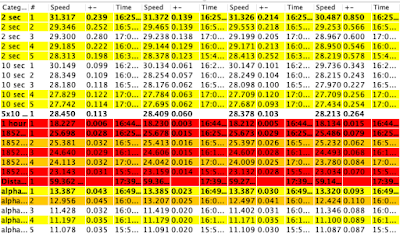This is a post about the Olapap GPS, a "plug and play" GPS logger put together with the Openlog Artemis (OLA), u-blox GPS chips, and a couple of cables. I'm sharing some windsurf test results that I have obtained with the "SparkFun GPS Breakout - NEO-M9N, Chip Antenna" board. This board has a powerful GPS chip (the M9), but a GPS antenna that is quite weak - similar to antennas used in phones.
I compared the "Olapa M9 chip" GPS to three other GPS devices that have been approved for use in the GPS Team Challenge:
- A Motion GPS (the original one with a screen), worn on my upper right arm.
- An Openlog prototype that uses the Beitian BN880 chip, worn on top of my helmet in a GoPro housing.
- Another Openlog Prototype that uses the (discontinued) Beitian BN280 chip, worn in a waterproof armband on my left arm
The Olapap GPS was in the same armband as the BN280 GPS, slightly above it. Both of these prototypes were in separate ziplock bags, in case the armband developed a leak.
Here's a screenshot from a GPS Speedreader comparison of the top speeds for the 4 units:
If you look at the top row that shows the fastest speed over 2 seconds, you see that the three approved GPS devices all show 31.3 knots; they differ only in the second digit after the period. But the Olapap M9 chip GPS (in the last set of columns) shows a top speed of only 30.487 knots - almost a knot slower than the others! Furthermore, the M9 chip GPS also reports the highest error estimates in the "+/-" column: 0.85 knots, compared to 0.139 knots to 0.239 knots for the other units.
Let's have a look at the speed graph here:
The curves for the three approved devices (in blue, red, and green) are all close together, with just small point-to-point variations that look random. But curve for the M9 chip GPS (in magenta) looks quite different, sometimes being lower and at other times being higher than the approved GPS units.
When we look at the data points for this section, we can identify a likely cause of the problem:
The columns with the rectangles show the number of satellites that the GPS units used: about 18 for the Motion, 24 for the GPS on top of the helmet, 20 for the BN280, and only 12 for the M9 chip GPS (which was very close to the BN280, in the same armband).
The differences between the first 3 GPS units are primarily due to the GPS position: the unit on the head had the clearest view of the sky, and was able to use 4-6 more satellites than the units worn on the arm. The lower number of satellites for the M9 chip unit is due to the smaller, weaker antenna. I did a number of tests where I looked at the signal-to-noise ratios for the satellites in the Ucenter software, and the values for the M9 chip antenna were always significantly worse than for other GPS units. No real surprise here - it is common knowledge that larger ceramic antennas provide superior GPS reception.
The end result of this test is that the NEO-M9 board with the chip antenna does not provide data that are of adequate quality for speedsurfing. Since there is no easy way to replace the antenna, I returned the chip to Amazon. I have started looking at the Sparkfun SAM-M8 chip that has an older (M8) GPS chip, but a larger and more sensitive antenna, and will probably add other M9 chips with external antennas in the future. The initial M8 results look promising, but more test sessions on the water are needed. I'll post results here when I get them.


